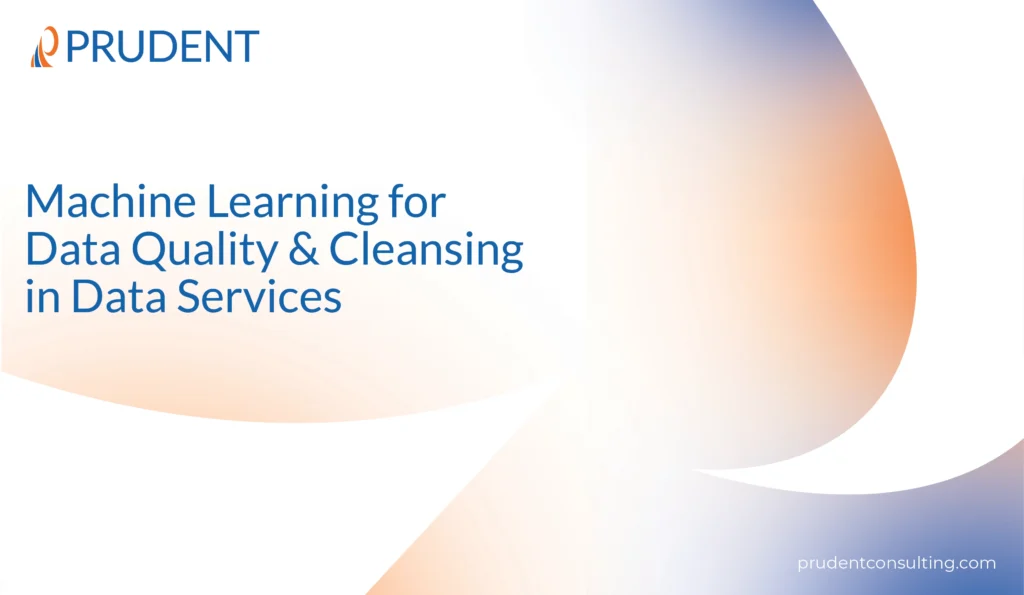Introduction:
In today’s data-driven world, ensuring the quality and cleanliness of data is paramount for organizations. Data quality can lead to accurate insights, sound decision-making, and efficient business processes. Machine learning (ML) techniques are increasingly leveraged for data quality and cleansing in data services to address this challenge. In this blog, we will explore the role of machine learning in data quality and cleansing processes and how it benefits organizations.
Automated Data Cleansing:
Data cleansing services involve identifying and rectifying errors, inconsistencies, and inaccuracies in datasets. Traditional methods of data cleansing often require manual efforts and are time-consuming. Machine learning algorithms, on the other hand, can automate this process by learning patterns from existing data and identifying potential errors or outliers. ML models are trained to detect and correct missing values, duplicates, formatting issues, and other common data quality problems. Organizations can save time, reduce human errors, and improve overall data quality by automating data cleansing services.
Anomaly Detection:
Identifying anomalies in datasets is crucial for maintaining data integrity. Anomaly detection using machine learning techniques enables organizations to identify unusual patterns or outliers that may indicate data errors or anomalies. ML models can learn from historical data and identify deviations from expected patterns. This approach allows for proactively detecting data inconsistencies, such as unusual data values, outliers, or unexpected data distributions. By leveraging machine learning for anomaly detection, organizations can promptly identify and address data quality issues, ensuring the reliability and accuracy of their data.
Data Standardization and Normalization:
Data services often deal with data from multiple sources, varying in formats, units, and structures. Inconsistent data formats can hinder data integration and analysis processes. Machine learning algorithms can be trained to standardize and normalize data from different sources. These models can learn the relationships between various data attributes and perform transformations to ensure consistency and compatibility across the dataset. Organizations can streamline data integration processes by leveraging ML for data standardization and normalization, improve data accuracy, and enable effective analysis.
Error Correction and Imputation:
Missing or incorrect data values are common challenges in data services. Machine learning algorithms can fill in missing values or correct erroneous ones through data imputation techniques. ML models can learn from patterns in the existing datasets to predict and replace missing values accurately. Similarly, they can identify and correct data errors based on statistical analysis or by imputing values using regression or classification models. Organizations can enhance data completeness, accuracy, and overall data quality by employing machine learning for error correction and imputation.
Continuous Monitoring and Improvement:
Machine learning can enable continuous data quality monitoring by analyzing patterns, trends, and dataset changes over time. ML models can be trained to detect shifts in data distributions, identify emerging data quality issues, and provide real-time alerts. Organizations can proactively address inconsistencies by continuously monitoring data quality using ML, performing regular data audits, and implementing improvement measures to maintain high-quality data.
Identify and Remove Duplicates:
Duplicate data has always hampered the productivity of data stewards. Marketers must identify when several records point to the same customer while developing targeted marketing strategies. A survey revealed that 81% of marketers need help to create a single view of the customer.
Manually tackling this challenge is difficult due to inconsistencies in data, typos, and stale information (e.g., changed addresses). Fuzzy matching is a method of determining whether two records are the same by considering several additional attributes. Machine learning programs can teach how to use this method.
Match and Validate Data:
Creating rules matching data collected from different sources can be time-consuming. It becomes increasingly challenging as the number of sources increases. Learning rules and predicting matches can be accomplished with machine learning models. More data facilitates fine-tuning the model because there is no limit to the amount of data.
Conclusion:
Machine learning techniques are revolutionizing data quality and cleansing processes in data services. Organizations can improve the accuracy, reliability, and usability of their data by automating data cleansing services, detecting anomalies, standardizing data, correcting errors, and continuously monitoring data quality. Embracing machine learning for data quality and cleansing enables organizations to unlock valuable insights, make informed decisions, and drive business success in the era of big data.
With Prudent, you can accelerate the adoption of AI & ML for business transformation by assessing the maturity of your analytics.

